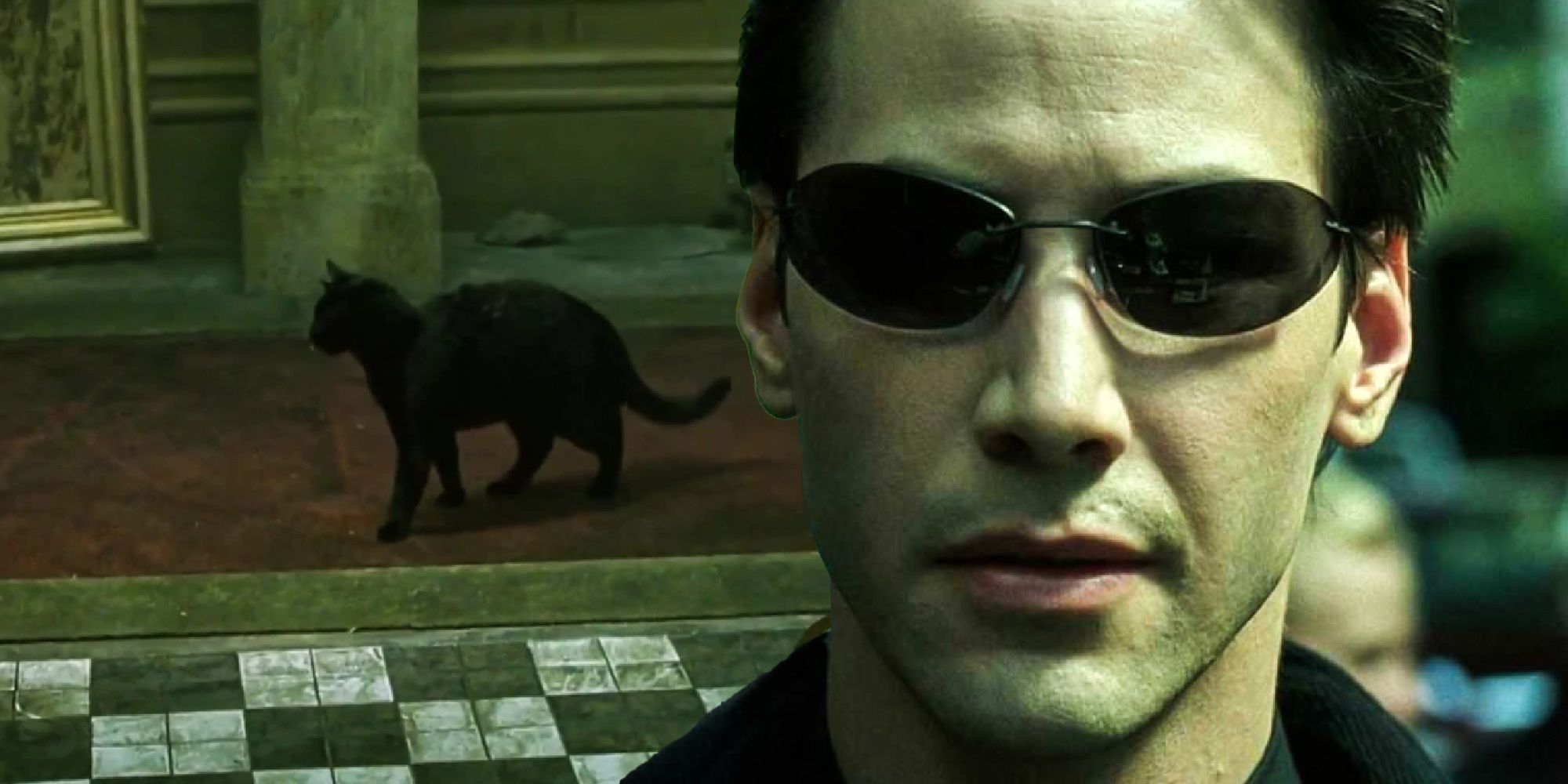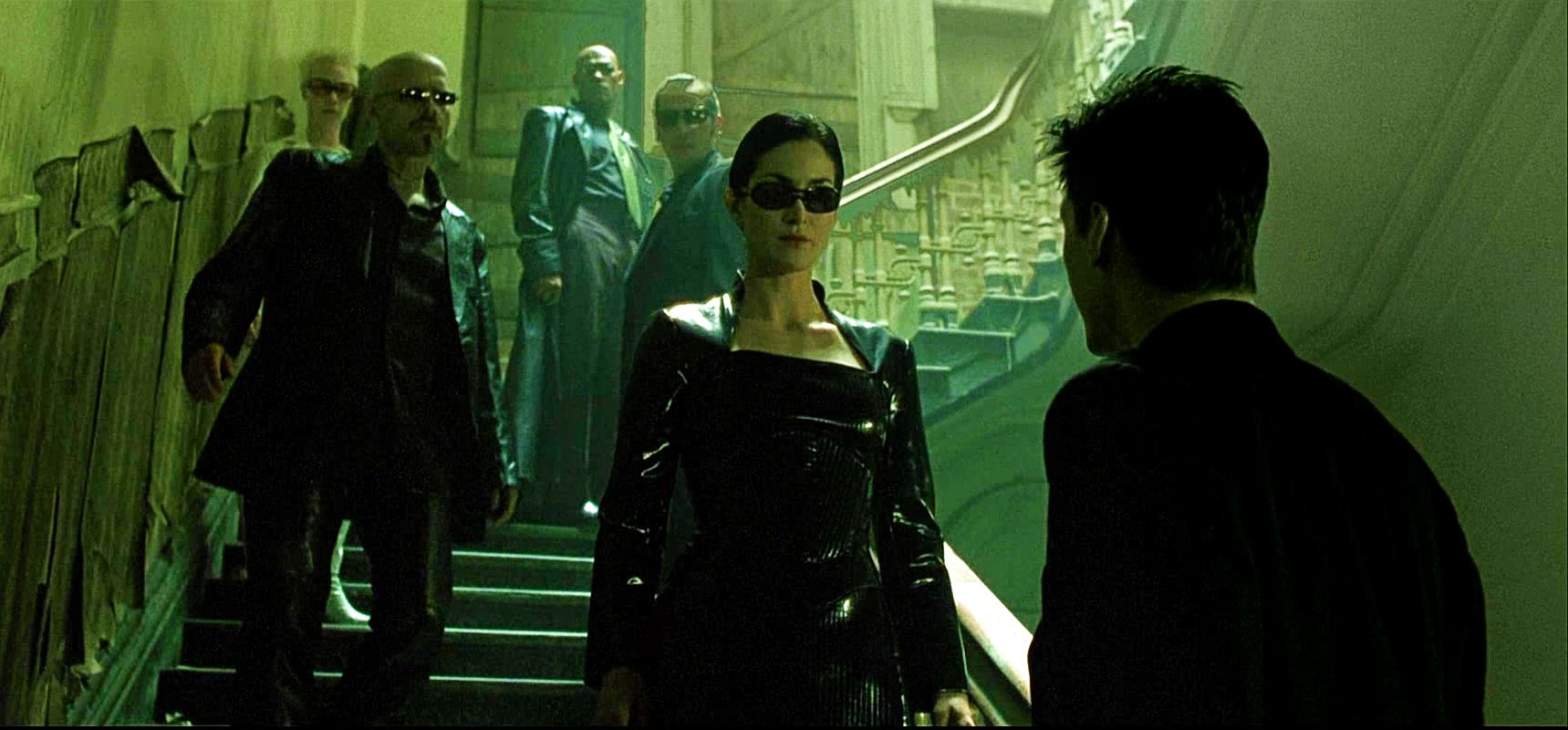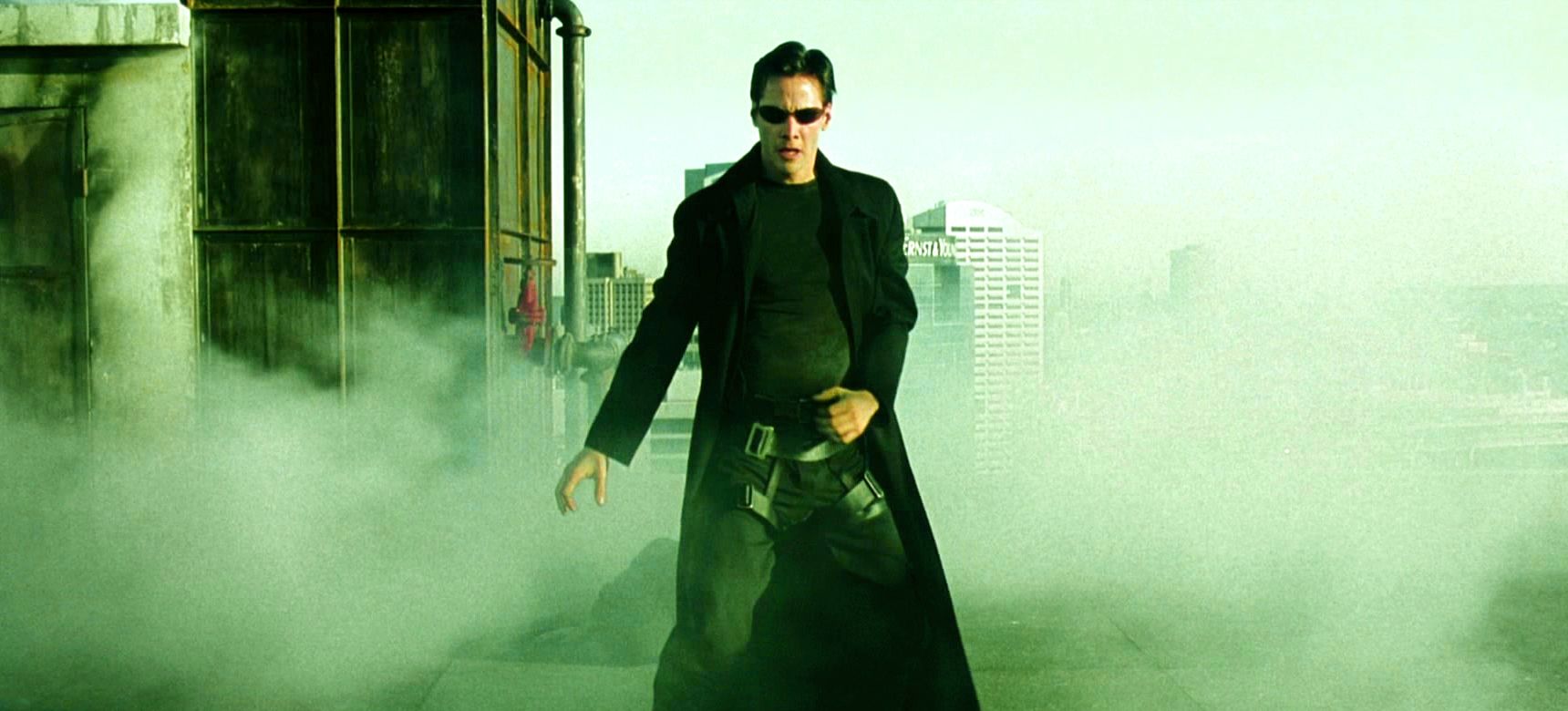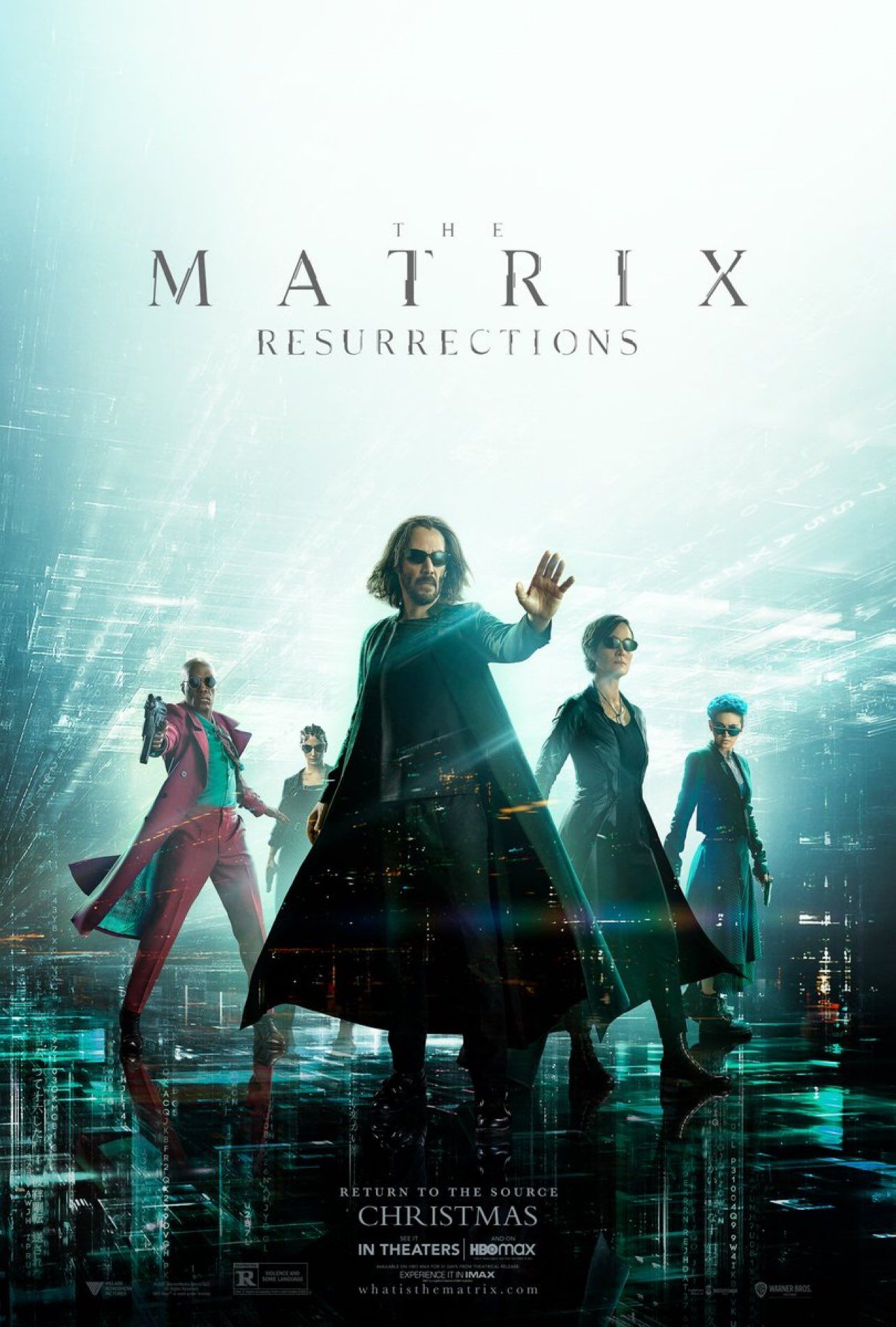A momentous scene in 1999’s The Matrix is when Neo witnesses a black cat replicate exact behavioral twitches twice down a hallway, making him say, “Whoa. Déjà vu.” This particular juncture in the film opens up a seminal plot propeller and allows the audience a glimpse into the concept of “a glitch in the matrix.” With the much-anticipated release of Matrix 4, the franchise’s newest installment, which picks up right after 2003’s Revolutions, it will be interesting to see how Lana Wachowski further unravels the saga of experiential reality that has a tangible impact on humans and machines alike.
It is no secret that The Matrix draws heavily from Jean Baudrillard’s 1981 philosophical treatise, Simulacra and Simulation, which delves deep into the notions of how objective reality has been replaced with subjective tokens or symbols, creating a “desert of the real.” This leads to the creation of a hyperreal world like that in The Matrix, wherein human perception is shaped by a tunnel-vision of apathy, servitude, and melancholy - as explained by Morpheus after Neo ingests the red pill at the decrepit Hotel Lafayette and comes to terms with the truth. The disconnect between the ‘real’ and the ‘hyperreal’ becomes further intensified during the opening scene in which Choi knocks on Neo’s door, and the latter retrieves hacked software from a hollowed-out copy of Baudrillard’s Simulacra and Simulation, which is merely a simulated representation of the real book.
Once Neo is unplugged from the matrix or the “computer-generated dream world”, Morpheus invites him, along with the viewer, to view the matrix’s hyperreal construct as an allegory for our current postmodern inclinations. It becomes clear that the majority of the human race has been reduced to an unwitting simulacrum to serve the machines, reminiscent of Plato’s Allegory of the Cave - an illusion that can only be dispelled by the emergence of ‘the One’. Armed with this newfound knowledge, Neo, along with a few rebels aboard the Nebuchadnezzar, enter the Matrix to visit the Oracle, an exiled program with clairvoyant abilities. After the meeting transpires, Neo experiences déjà vu when he notices the same black cat passing the hallway twice.
This phenomenon, or déjà vu, as Trinity explains, is a glitch in the matrix - a sign that something within the programmed reality has been altered, which also serves as evidence for the illusory nature of the hyperreal realm. This particular revelation is significant within the framework of The Matrix, as it alerts the crew aboard the Nebuchadnezzar that the code of the Lafayette Hotel has been altered and all exits have been sealed. The group is ambushed by agents and tactical police, who capture Morpheus, while the rest of the crew manage to escape. It is also revealed that the ambush was orchestrated by Cypher, a member of Morpheus’ renegade group, who had struck a deal with Agent Smith in exchange for an escape from the treacherous perils of the real world.
Despite being unplugged from the hyperreal world, and possessing the ability to distinguish between reality and its simulation, Cypher chooses the allure of the matrix over the authentic struggles of the real world. Similar instances of characters being content with living in simulated virtual realities (either by choice, or lack thereof) is exemplified in the works of Philip K. Dick: be it the illusory alternative history of World War II in The Man in the High Castle or the looped fabricated reality in off-world colonies as a coping mechanism in A Maze of Death. Characters like Cypher would rather choose servitude to a tyrannical system in a synthetic world, as opposed to fighting for freedom in a post-apocalyptic existence rooted in reality.
Nevertheless, it is difficult to not acknowledge the true allure of the matrix - after all, the real world does not allow one to leap acrobatically from one building to the next to Rage Against the Machine soundtracks or dodge bullets while tackling enemies in designer eyewear and dark, tailored suits. This distinction between the real and the hyperreal is clear throughout The Matrix trilogy, be it through visual cues, color contrasts, or mise-en-scènes, and the black cat déjà vu is a reminder of the trappings of the matrix, which ultimately is a dream world rigged with dangers for those who wish to wake up.
The phenomenon of a glitch in the matrix is also featured in one of The Matrix Comics, titled Déjà Vu, in which the protagonist’s wife constantly feels a strange sense of familiarity in her day-to-day life, to the point that she becomes aware of the real world through nightmares. This “glitch” in the hyperreal world was caused by a fault in her harvest pod, which was submerged in fluid only halfway, hence blurring the lines between reality and simulation. Apart from this, the protagonist in Neil Gaiman’s comic Goliath, included in The Matrix Comics Volume 1, also experiences the strangest bouts of déjà vu before the matrix in London is reset: for him, “moments would stutter and hiccup and falter and repeat.”
Hence, within the framework of The Matrix, a déjà vu is a warning, a precognition that signifies the gap between perception and reality. This is in sync with Baudrillard’s stance that symbols of capitalist propaganda that create a hyperreal structure to replace what’s real can only be identified by questioning the inner workings of a simulation. Baudrillard says: “It is always a question of proving the real through the imaginary; proving truth through scandal, proving the law through transgression, proving work through striking, proving the system through crisis.”
It is only through transgression, deconstruction, and sacrifice that Neo is able to reconstruct the matrix at the end of Revolutions, fulfilling the prophecy of “the One” and satisfying a narrative arc that mimics the classic thesis-antithesis-synthesis framework. This narrative is brought full-circle at the end of The Matrix trilogy, when a black cat crosses the rain-soaked streets and disappears for a moment, only to reappear and run over to Sati, signifying that the matrix has been reloaded.




